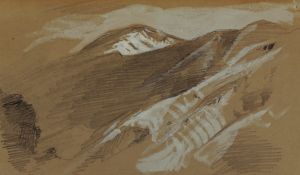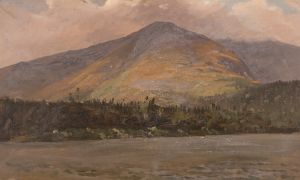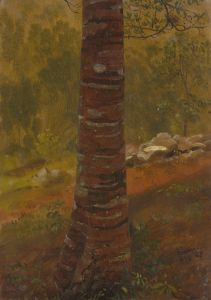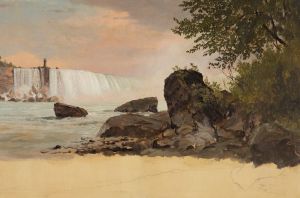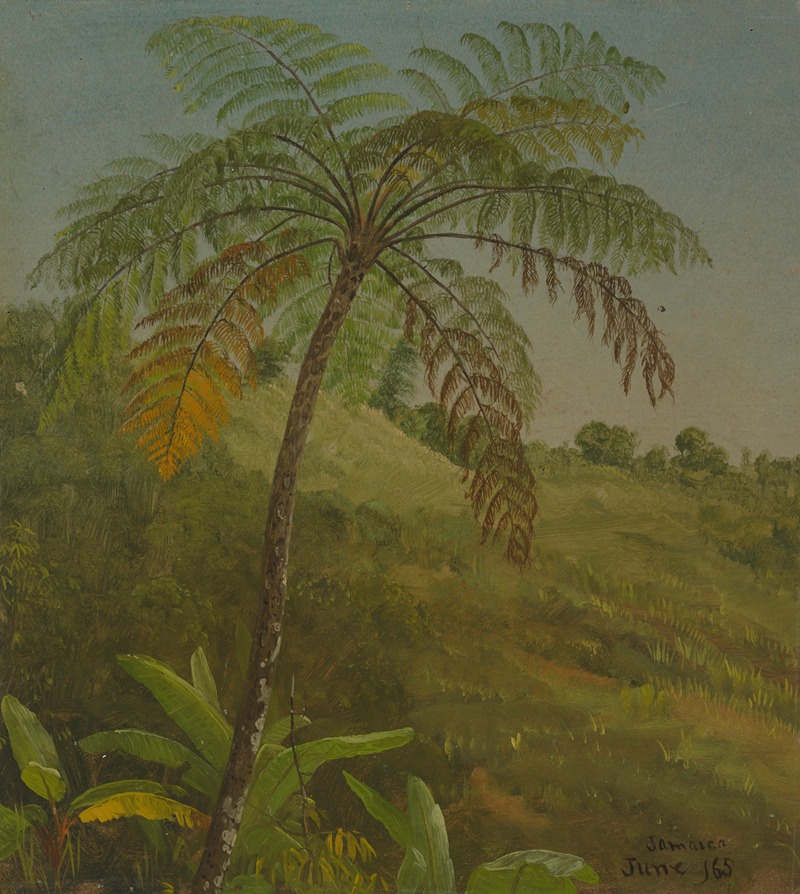
Palm Tree, Jamaica
A hand-painted replica of Frederic Edwin Church’s masterpiece Palm Tree, Jamaica, meticulously crafted by professional artists to capture the true essence of the original. Each piece is created with museum-quality canvas and rare mineral pigments, carefully painted by experienced artists with delicate brushstrokes and rich, layered colors to perfectly recreate the texture of the original artwork. Unlike machine-printed reproductions, this hand-painted version brings the painting to life, infused with the artist’s emotions and skill in every stroke. Whether for personal collection or home decoration, it instantly elevates the artistic atmosphere of any space.
"Palm Tree, Jamaica" is a painting by the American landscape artist Frederic Edwin Church, created in 1860. Church was a central figure in the Hudson River School, a mid-19th century American art movement known for its detailed, romantic portrayals of the American landscape. His works often reflect a deep appreciation for nature's grandeur and beauty, and "Palm Tree, Jamaica" is no exception.
Frederic Edwin Church was born in Hartford, Connecticut, in 1826. He studied under Thomas Cole, the founder of the Hudson River School, and quickly became known for his ability to capture the sublime aspects of nature. Church's travels were extensive, and he sought to depict a variety of landscapes from different parts of the world. His journey to Jamaica in 1865 was part of his broader interest in exploring and painting exotic locales.
"Palm Tree, Jamaica" is an oil on canvas painting that measures approximately 27 x 48 inches. The painting showcases a lush, tropical scene dominated by a towering palm tree, which serves as the focal point. The composition is rich with vibrant colors and intricate details, capturing the essence of the Jamaican landscape. The palm tree stands tall against a backdrop of verdant foliage and a distant view of the Caribbean Sea. The sky is depicted with a mix of warm and cool tones, suggesting either dawn or dusk, which adds a dramatic effect to the scene.
Church's attention to detail is evident in the way he meticulously renders the textures of the palm fronds and the surrounding vegetation. The play of light and shadow in the painting enhances the three-dimensional quality of the scene, making it appear almost lifelike. This level of detail is characteristic of Church's work and reflects his dedication to realism and his ability to convey the natural world's beauty.
The painting is significant not only for its artistic merit but also for its historical context. During the mid-19th century, there was a growing interest in the exotic and the unknown, fueled by increased travel and exploration. Church's depiction of Jamaica would have appealed to an American audience eager to learn about and experience distant lands. His work provided a window into these far-off places, allowing viewers to appreciate the diversity and splendor of the natural world.
"Palm Tree, Jamaica" is part of the collection at the Wadsworth Atheneum Museum of Art in Hartford, Connecticut. The museum holds an extensive collection of Church's works, reflecting his importance as a leading figure in American art. The painting remains a testament to Church's skill as a landscape artist and his ability to capture the essence of the places he visited.
In summary, "Palm Tree, Jamaica" by Frederic Edwin Church is a masterful representation of the Jamaican landscape, showcasing the artist's talent for detail and his fascination with the natural world. The painting continues to be celebrated for its beauty and its contribution to the Hudson River School's legacy.





